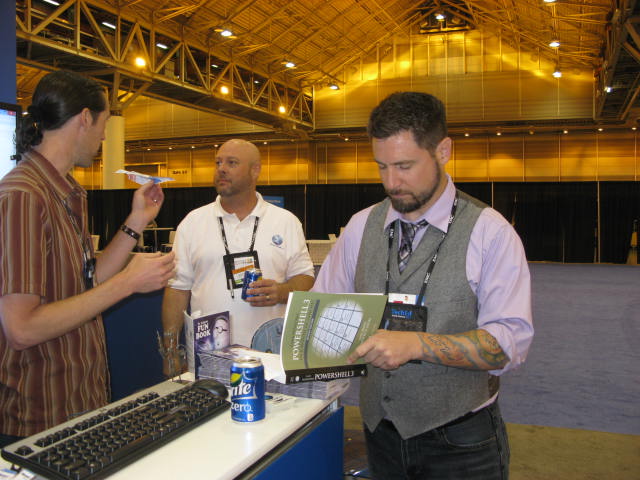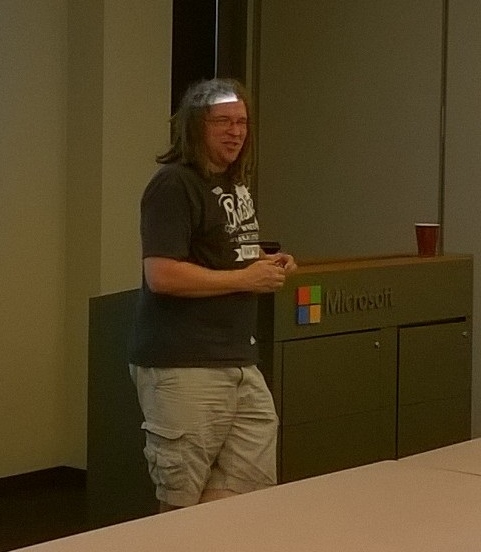Meet the PowerShell Summit 2015 Speakers #2
Summary: Microsoft PowerShell MVP, Teresa Wilson, talks about the Windows PowerShell Summit speakers.
Microsoft Scripting Guy, Ed Wilson, is here. Welcome back guest blogger, Teresa Wilson, as she continues introducing you to the speakers for the PowerShell Summit and their sessions.
Thanks Ed. I'm glad to have this opportunity to tell you a little bit about some of the speakers for the North America PowerShell Summit 2015 in Charlotte, NC.
What would the PowerShell Summit be without PowerShell.org and our fearless leader, Don Jones? Don is a Windows PowerShell MVP and Honorary Scripting Guy. In his sessions, Don will present:
- Desired State Configuration (DSC) Resource Design. Join Don Jones for a discussion about best practices for DSC Resource design, testing, and troubleshooting. This is intended as a discussion, meaning the audience will be asked to contribute their observations, tricks, tips, and solutions. Don will also talk about a set of patterns that he developed in conjunction with recent consulting customers to make resource authoring and debugging easier.
- Architecting the Ultimate PowerShell Jump Server. Between remoting, custom endpoints, JIT/JEA, DSC, and PSWA (yay, acronyms!), you've got everything you need to assemble a truly ultimate solution for delegated, secured, audited administration in any Windows environment. All you need to do is put the pieces together. Don walks you through what he's done with several customers, what worked, and what challenges still exist.
Pictured here is Don autographing one of his books with Jason Helmick in the background and Greg Shields on the left.
For more from Don, see:
Jim Christopher is a Windows PowerShell MVP and the leader of the Charlotte PowerShell User Group. That is one of the coolest facts I can state. Jim lives in the vicinity and we get to see and talk with him at the monthly user group meetings. Jim also has two sessions:
- SeeShell: Visualizing Shell Objects. The formatting subsystem in Windows PowerShell is powerful, but it is limited to representing objects in text-based formats. Let's be honest, sometimes a picture is worth a thousand words. That's where SeeShell comes in. SeeShell is a Windows PowerShell module that enables you to visualize data from your pipeline.
In this session, you will learn how you can use SeeShell to graph and plot Windows PowerShell objects in the console and the ISE. Specific attention will be given to the myriad of plots types available, and how you can map multiple live and static data sources to visualize them.
- Simplex: Stupid Simple Providers. Simplex takes the pain out of providers. It is an open-source, liberally licensed Windows PowerShell module that allows you to create full-featured providers by using a simple domain-specific language based on the Windows PowerShell you already know. In this session, you will create a series of providers to manage hierarchical systems, including local and remote DSC resources, by using nothing except a little Windows PowerShell.
Here is a picture of Jim in action:
For more about Jim, see:
Rohn Edwards is the cofounder of the Mississippi PowerShell User Group and winner of the Advanced category in the 2012 Scripting Games. Rohn has a two part session for you.
- PowerShell Access Control Part 1: Using the Command Line. Access control in Windows, although very powerful, can be very complicated. Working with security descriptors one object at-a-time through the GUI is fairly straightforward, but that doesn't help when you need to audit and/or configure settings for multiple objects at the same time. There are command-line utilities available that provide the ability to work with multiple objects at one time, but learning their syntax and parsing through their output can be painful.
Fortunately, Windows PowerShell has the ability to replace most, if not all, of the command-line and GUI utilities. In this session, we'll cover using a free custom Windows PowerShell module to view, export, and edit security descriptors from the command line for almost any securable object in Windows, including files, folders, registry keys, services, processes, WMI namespaces, Active Directory objects, and WSMan objects.
- PowerShell Access Control Part 2: Desired State Configuration. In this session, we’ll continue where Part 1 left off and discuss how to configure security descriptors with DSC and the free PowerShell Access Control module. This includes ensuring specific access is present, controlling entire discretionary and system ACLs, enabling and disabling ACL inheritance, and controlling owners and groups.
Rohn is pictured here with Lido Paglia (the Beginner category winner in the 2012 Scripting Games) and Jeffrey Snover:
For more from Rohn, see:
Jason Morgan rounds out the speakers and sessions I will share today. Jason has been involved in the leadership of at least two Windows PowerShell user groups that I know about, and he has been an active participant in the Scripting Games over the years. Jason has also been a guest blogger here. At the Summit, Jason’s topic is:
- Large Scale Monitoring with PowerShell. I do a lot of monitoring across security domains using Windows PowerShell. This talk is about building a standardized deployment, writing monitors, testing monitors, and so on. When you're writing enterprise-scale monitors, it isn't enough to simply write some scripts and let them run. It's important to build-in fault tolerance, error reporting, monitoring, and testing.
This talk isn't about writing monitors themselves. Instead, it is about writing the supporting the infrastructure to ensure that your monitors are doing what they're supposed to do. Additionally, when you're called to deploy monitors quickly, it helps to have a standardized template for your monitors and a common deployment mechanism.
Here is a photo of Jason:
For more from Jason, see:
That wraps up Day 2 of my report for some of the speakers and sessions for the North America PowerShell Summit 2015.
~Teresa
I invite you to follow me on Twitter and Facebook. If you have any questions, send email to me at scripter@microsoft.com, or post your questions on the Official Scripting Guys Forum. See you tomorrow. Until then, peace.
Ed Wilson, Microsoft Scripting Guy





 Light
Light Dark
Dark
0 comments